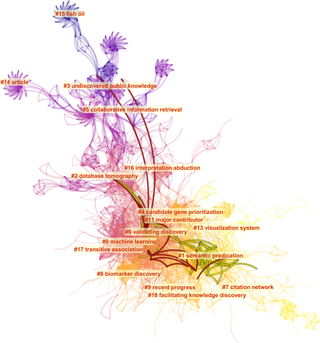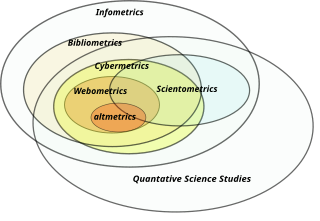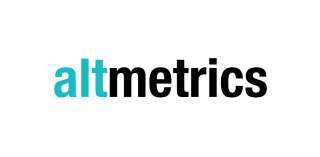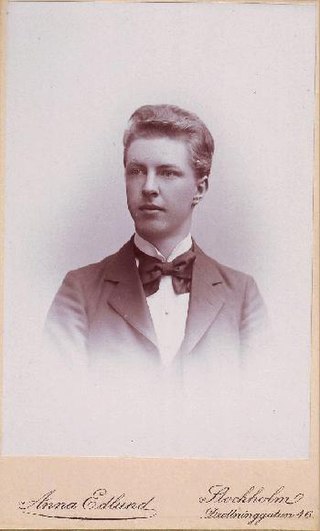Related Research Articles
A citation index is a kind of bibliographic index, an index of citations between publications, allowing the user to easily establish which later documents cite which earlier documents. A form of citation index is first found in 12th-century Hebrew religious literature. Legal citation indexes are found in the 18th century and were made popular by citators such as Shepard's Citations (1873). In 1961, Eugene Garfield's Institute for Scientific Information (ISI) introduced the first citation index for papers published in academic journals, first the Science Citation Index (SCI), and later the Social Sciences Citation Index (SSCI) and the Arts and Humanities Citation Index (AHCI). American Chemical Society converted its printed Chemical Abstract Service into internet-accessible SciFinder in 2008. The first automated citation indexing was done by CiteSeer in 1997 and was patented. Other sources for such data include Google Scholar, Microsoft Academic, Elsevier's Scopus, and the National Institutes of Health's iCite.

Bibliometrics is the use of statistical methods to analyse books, articles and other publications, especially in scientific contents. Bibliometric methods are frequently used in the field of library and information science. Bibliometrics is closely associated with scientometrics, the analysis of scientific metrics and indicators, to the point that both fields largely overlap.
Scientometrics is the field of study which concerns itself with measuring and analysing scholarly literature. Scientometrics is a sub-field of informetrics. Major research issues include the measurement of the impact of research papers and academic journals, the understanding of scientific citations, and the use of such measurements in policy and management contexts. In practice there is a significant overlap between scientometrics and other scientific fields such as information systems, information science, science of science policy, sociology of science, and metascience. Critics have argued that over-reliance on scientometrics has created a system of perverse incentives, producing a publish or perish environment that leads to low-quality research.
Citation analysis is the examination of the frequency, patterns, and graphs of citations in documents. It uses the directed graph of citations — links from one document to another document — to reveal properties of the documents. A typical aim would be to identify the most important documents in a collection. A classic example is that of the citations between academic articles and books. For another example, judges of law support their judgements by referring back to judgements made in earlier cases. An additional example is provided by patents which contain prior art, citation of earlier patents relevant to the current claim.

Informetrics is the study of quantitative aspects of information, it is an extension and evolution of traditional bibliometrics and scientometrics. Informetrics uses bibliometrics and scientometrics methods to study mainly the problems of literature information management and evaluation of science and technology. Informetrics is an independent discipline that uses quantitative methods from mathematics and statistics to study the process, phenomena, and law of informetrics. Informetrics has gained more attention as it is a common scientific method for academic evaluation, research hotspots in discipline, and trend analysis.
Citation impact is a measure of how many times an academic journal article or book or author is cited by other articles, books or authors. Citation counts are interpreted as measures of the impact or influence of academic work and have given rise to the field of bibliometrics or scientometrics, specializing in the study of patterns of academic impact through citation analysis. The journal impact factor, the two-year average ratio of citations to articles published, is a measure of the importance of journals. It is used by academic institutions in decisions about academic tenure, promotion and hiring, and hence also used by authors in deciding which journal to publish in. Citation-like measures are also used in other fields that do ranking, such as Google's PageRank algorithm, software metrics, college and university rankings, and business performance indicators.
The h-index is an author-level metric that measures both the productivity and citation impact of the publications, initially used for an individual scientist or scholar. The h-index correlates with obvious success indicators such as winning the Nobel Prize, being accepted for research fellowships and holding positions at top universities. The index is based on the set of the scientist's most cited papers and the number of citations that they have received in other publications. The index has more recently been applied to the productivity and impact of a scholarly journal as well as a group of scientists, such as a department or university or country. The index was suggested in 2005 by Jorge E. Hirsch, a physicist at UC San Diego, as a tool for determining theoretical physicists' relative quality and is sometimes called the Hirsch index or Hirsch number.
The Science Citation Index Expanded – previously titled Science Citation Index – is a citation index originally produced by the Institute for Scientific Information (ISI) and created by Eugene Garfield.

The Social Sciences Citation Index (SSCI) is a commercial citation index product of Clarivate Analytics. It was originally developed by the Institute for Scientific Information from the Science Citation Index. The Social Sciences Citation Index is a multidisciplinary index which indexes over 3,400 journals across 58 social science disciplines – 1985 to present, and it has 122 million cited references – 1900 to present. It also includes a range of 3,500 selected items from some of the world's finest scientific and technical journals. It has a range of useful search functions such as ‘cited reference searching’, searching by author, subject, or title. Whilst the Social Sciences Citation Index provides extensive support in bibliographic analytics and research, a number of academic scholars have expressed criticisms relating to ideological bias and its English-dominant publishing nature.
Journal ranking is widely used in academic circles in the evaluation of an academic journal's impact and quality. Journal rankings are intended to reflect the place of a journal within its field, the relative difficulty of being published in that journal, and the prestige associated with it. They have been introduced as official research evaluation tools in several countries.

An academic discipline or academic field is a subdivision of knowledge that is taught and researched at the college or university level. Disciplines are defined and recognized by the academic journals in which research is published, and the learned societies and academic departments or faculties within colleges and universities to which their practitioners belong. Academic disciplines are conventionally divided into the humanities, including language, art and cultural studies, and the scientific disciplines, such as physics, chemistry, and biology; the social sciences are sometimes considered a third category.
HistCite is a software package used for bibliometric analysis and information visualization. It was developed by Eugene Garfield, the founder of the Institute for Scientific Information and the inventor of important information retrieval tools such as Current Contents and the Science Citation Index.

In scholarly and scientific publishing, altmetrics are non-traditional bibliometrics proposed as an alternative or complement to more traditional citation impact metrics, such as impact factor and h-index. The term altmetrics was proposed in 2010, as a generalization of article level metrics, and has its roots in the #altmetrics hashtag. Although altmetrics are often thought of as metrics about articles, they can be applied to people, journals, books, data sets, presentations, videos, source code repositories, web pages, etc.

A citation graph, in information science and bibliometrics, is a directed graph that describes the citations within a collection of documents.
The CWTS Leiden Ranking is an annual global university ranking based exclusively on bibliometric indicators. The rankings are compiled by the Centre for Science and Technology Studies at Leiden University in the Netherlands. The Clarivate Analytics bibliographic database Web of Science is used as the source of the publication and citation data.
Author-level metrics are citation metrics that measure the bibliometric impact of individual authors, researchers, academics, and scholars. Many metrics have been developed that take into account varying numbers of factors.

Microsoft Academic was a free internet-based academic search engines for academic publications and literature, developed by Microsoft Research, shut down in 2022. At the same time, OpenAlex launched and claimed to be a successor to Microsoft Academic.

Sten Yngve Dennis Lagergren was a Swedish physical chemist known for his fundamental findings in adsorption kinetics.

Clarivate Plc is a British-American publicly traded analytics company that operates a collection of subscription-based services, in the areas of bibliometrics and scientometrics; business / market intelligence, and competitive profiling for pharmacy and biotech, patents, and regulatory compliance; trademark protection, and domain and brand protection. In the academy and the scientific community, Clarivate is known for being the company which calculates the impact factor, using data from its Web of Science product family, that also includes services/applications such as Publons, EndNote, EndNote Click, and ScholarOne. Its other product families are Cortellis, DRG, CPA Global, Derwent, MarkMonitor, CompuMark, and Darts-ip, and also the various ProQuest products and services.
The Leiden Manifesto for research metrics (LM) is a list of "ten principles to guide research evaluation", published as a comment in Volume 520, Issue 7548 of Nature, on 22 April 2015. It was formulated by public policy professor Diana Hicks, scientometrics professor Paul Wouters, and their colleagues at the 19th International Conference on Science and Technology Indicators, held between 3–5 September 2014 in Leiden, The Netherlands.
References
- ↑ Peirce, C. S. (1884). "The numerical measure of the success of predictions". Science . 4 (93): 453–454. doi:10.1126/science.ns-4.93.453-a. PMID 17795531.
- ↑ Van Calster, Ben (2012). "It takes time: A remarkable example of delayed recognition". Journal of the American Society for Information Science and Technology . 63 (11): 2341–2344. doi:10.1002/asi.22732.
- ↑ Costas, Rodrigo; Van Leeuwen, Thed N.; Van Raan, Anthony F.J. (2010). "Is scientific literature subject to a 'Sell-By-Date'? A general methodology to analyze the 'durability' of scientific documents". Journal of the American Society for Information Science and Technology . 61 (2): 329. arXiv: 0907.1455 . doi:10.1002/asi.21244. S2CID 14363558.
- ↑ Garfield, E. (1980). "Premature discovery or delayed recognition-Why?" (PDF). Essays of an Information Scientist. Vol. 4. pp. 488–493. ISBN 0-89495-012-6.
- ↑ Glänzel, Wolfgang; Schlemmer, Balázs; Thijs, Bart (2003). "Better late than never? On the chance to become highly cited only beyond the standard bibliometric time horizon". Scientometrics . 58 (3): 571. doi:10.1023/B:SCIE.0000006881.30700.ea. S2CID 25286939.
- ↑ Van Raan, Anthony F. J. (2004). "Sleeping Beauties in science". Scientometrics . 59 (3): 467–472. doi:10.1023/B:SCIE.0000018543.82441.f1. S2CID 189864678.
- ↑ Bhanoo, Sindya N. (May 26, 2015). "Even Einstein Can Take Time to matter". Science Times. The New York Times. p. d4.
- ↑ Qing Ke; Emilio Ferrara; Filippo Radicchi; Alessandro Flammini (2015). "Defining and identifying Sleeping Beauties in science". Proceedings of the National Academy of Sciences of the United States of America . 112 (24): 7426–7431. arXiv: 1505.06454 . Bibcode:2015PNAS..112.7426K. doi: 10.1073/pnas.1424329112 . PMC 4475978 . PMID 26015563.
- ↑ Defining and identifying Sleeping Beauties in science Table 1.
- ↑ Moodley, K., Hernández Serrano, P., van Dijck, G., & Dumontier, M. (2020). Sleeping Beauties in Case Law. Paper presented at International Conference on Legal Knowledge and Information Systems, Prague, Czech Republic.
- ↑ Qing Ke, Emilio Ferrara, Filippo Radicchi, and Alessandro Flammini. (2015). Defining and Identifying Sleeping Beauties in Science. In Proceedings of the National Academy of Sciences.
- ↑ Teixeira, Aurora AC, Pedro Cosme Vieira, and Ana Patrícia Abreu. "Sleeping Beauties and their princes in innovation studies." Scientometrics 110, no. 2 (2017): 541-580.
- ↑ Ho, Yuh-Shan, and James Hartley. "Sleeping beauties in psychology." Scientometrics 110, no. 1 (2017): 301-305.
- ↑ Du, Jian, and Yishan Wu. "A bibliometric framework for identifying “Princes” who wake up the “Sleeping Beauty” in challenge-type scientific discoveries." Journal of Data and Information Science 1, no. 1 (2017): 50-68
- ↑ van Raan, Anthony FJ, and Jos J. Winnink. "Do younger Sleeping Beauties prefer a technological prince?." Scientometrics 114, no. 2 (2018): 701-717.
- ↑ van Raan, Anthony FJ, and Jos J. Winnink. "The occurrence of ‘Sleeping Beauty’publications in medical research: Their scientific impact and technological relevance." PLOS ONE 14, no. 10 (2019): e0223373.